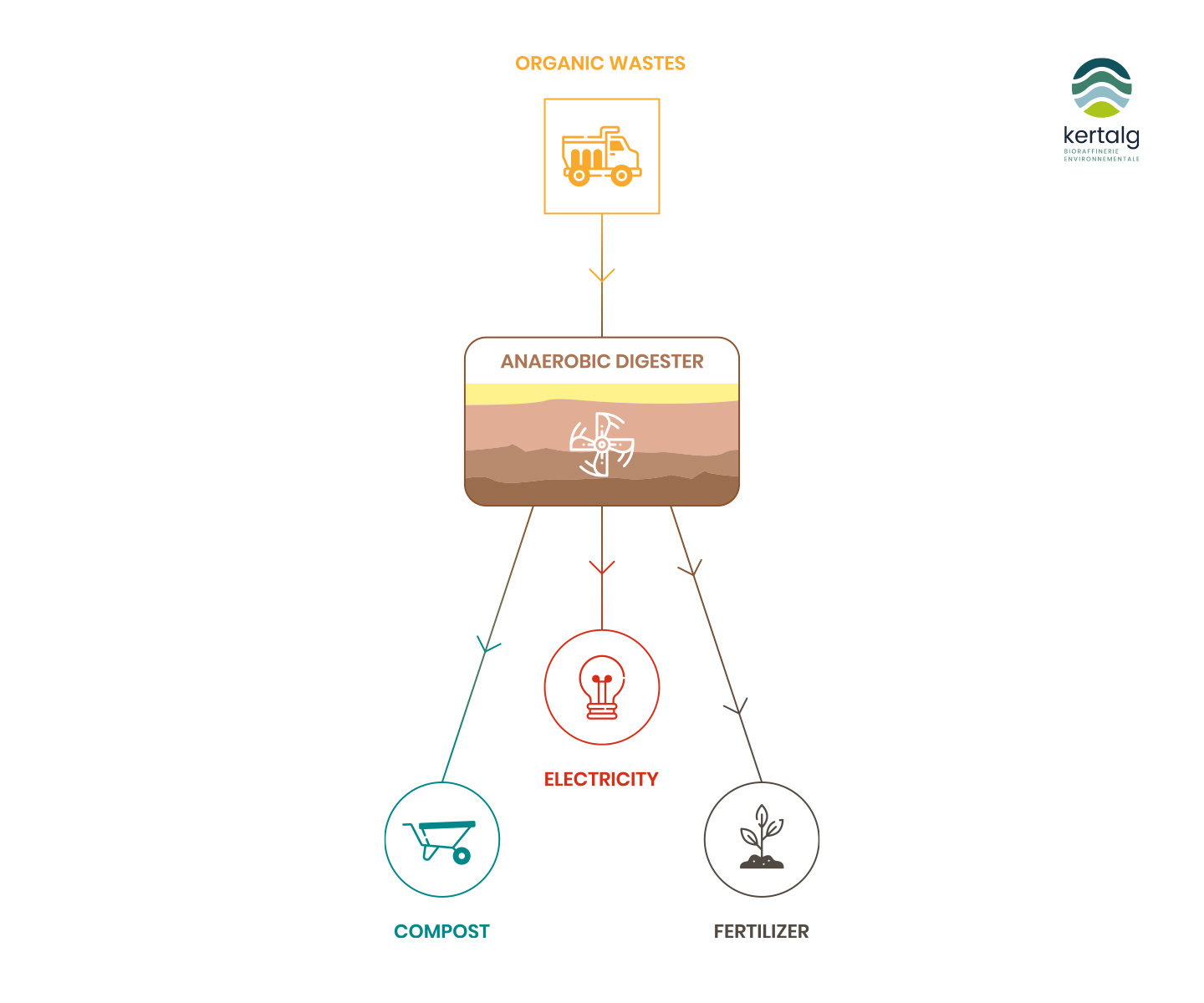Principle
Methanization is a natural biological process that consists of the transformation of organic matter into methane gas. In the context of waste treatment, this process can only be applied to bio-waste (wet waste). It can therefore be used to treat food, agri-food and wine waste, sewage sludge and other natural biodegradable waste.
01. Collecting, sorting and loading
The sorted waste is collected and brought to the treatment site. Before being loaded into the anaerobic digester (biomethanator), the waste is sterilized to eliminate possible pathogens. It is then crushed and sent to the methanisation tank.
02. Digestate
Once in the methanisation tank, the waste will undergo fermentation in four main stages: hydrolysis, acidogenesis, acetogenesis and methanogenesis. The waste is then cut into simple molecules and converted into two gases, carbon dioxide and methane. The fraction of this waste that cannot be converted into gas will come out as a digestate (sludge).
03. Enhance
The raw digestate is separated into two components: liquid and solid. The solid component will be composted, and the liquid component will be used as a culture medium for the microalgae.
The methane is separated from the carbon dioxide to be used as an energy source, or to be transformed into electricity via a generator. The carbon dioxide will, like the liquid digestate, be consumed by the microalgae.

